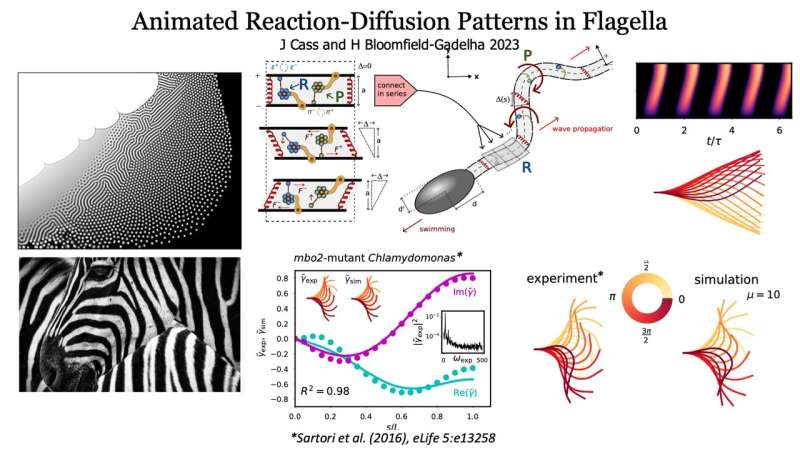Sperm swimming is caused by the same patterns that are believed to dictate zebra stripes
Originally published by University of Bristol on September 27, 2023
Patterns of chemical interactions are thought to create patterns in nature such as stripes and spots. A new study shows that the mathematical basis of these patterns also governs how sperm tail moves.
The findings, published in Nature Communications, on September 27, 2023, reveal that flagella movement of—for example, sperm tails and cilia—follows the same template for pattern formation that was discovered by mathematician Alan Turing.
Flagellar undulations make stripe patterns in space-time, generating waves that travel along the tail to drive the sperm and microbes forward.
Alan Turing is most well-known for helping to break the enigma code during WWII. However he also developed a theory of pattern formation that predicted that chemical patterns may appear spontaneously with only two ingredients: chemicals spreading out (diffusing) and reacting together. Turing first proposed the so-called reaction-diffusion theory for pattern formation.
Turing helped to pave the way for a whole new type of enquiry using reaction-diffusion mathematics to understand natural patterns. Today, these chemical patterns first envisioned by Turing are called Turing patterns. Although not yet proven by experimental evidence, these patterns are thought to govern many patterns across nature, such as leopard spots, the whorl of seeds in the head of a sunflower, and patterns of sand on the beach. Turing's theory can be applied to various fields, from biology and robotics to astrophysics.
Video explainer. Credit: Hermes Gadêlha
Mathematician Dr. Hermes Gadêlha, head of the University of Bristol Polymaths Lab, and his Ph.D. student James Cass conducted this research in the School of Engineering Mathematics and Technology at the University of Bristol.

Comments
Post a Comment